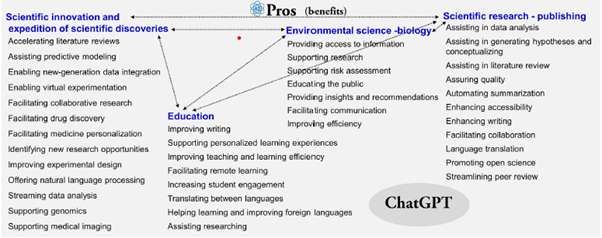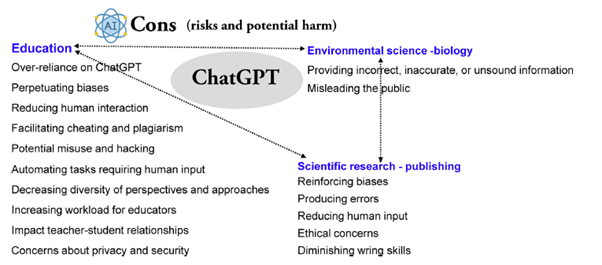Empowering Environmental Science: The Role of ChatGPT in Driving Sustainable Solutions
AI


Description
In this blog, we will discuss how ChatGPT, an AI language model, is empowering environmental science by providing insights, and suggestions, and simplifying communication. Moreover, we will also learn about the pros and cons of integrating ChatGPT in environmental research.
Introduction
In the body of environmental science, the demand for sustainable solutions to critical ecological challenges is more urgent than scientists have anticipated. With the use of Artificial intelligence-based ChatGPT, it has emerged as a revolutionary ally in enhancing the research, communication, and decision-making for environmental scientists and in the environmental science domain.
This blog explores the transformative impact of ChatGPT in driving innovation and progress towards a more sustainable future, as well as explores certain drawbacks and limitations that environmental scientists should be aware of with respect to ChatGPT based on this following study.
Benefits of ChatGPT for Environmental Scientists
Benefits of ChatGPT for environmental scientists:
For environmental scientists, the use of ChatGPT and other AI-based applications provides an array of benefits that are practically beneficial to tackle urgent environmental issues like climate change. Such benefits include:
Environmental Data Analysis: ChatGPT compiles large amounts of environmental data, analyses certain trends, and provides crucial insights to environmental scientists and policymakers, which help foster the successful development of effective strategies for environmental preservation and conservation.
Environmental Risk Mitigation: By converting complex scientific data into simple scientific suggestions, ChatGPT helps shape environmental policies, encouraging sustainable practices, and managing environmental risks.
Sustainable Communication and Education: ChatGPT assists environmental scientists with the translation of scientific concepts into easily accessible language, unlocking the ability for effective communication between researchers and the public. It also ethically encourages the development of educational materials offered to the public to raise awareness about environmental issues and nurture the growth of a valuable society that deeply cares about the environment.
Efficiency and Innovation: Through the automation of tasks such as data analysis and literature review, ChatGPT unlocks efficiency in environmental research, thus providing time for scientists to focus on unconventional and innovative solutions to environmental problems.


Fig.1: Pros ChatGPT (Agathokleous Et al, 2023)
Drawbacks of ChatGPT for Environmental Scientists
Drawbacks of ChatGPT for environmental scientists:
While ChatGPT offers an array of advantages in the domain of environmental science, it is essential to understand and be aware of potential drawbacks and limitations associated with its integration. Such an array of drawbacks include:
Risk of Misinformation: While ChatGPT could generate accurate environmental information and provide crucial insights, it poses a risk of also generating inaccurate information that may mislead the public and researchers.
Accuracy Concerns: There is a scientific possibility for the existence of errors in data analysis and environmental recommendations due to the contextual limitations of ChatGPT as an AI language model.
Ethical Considerations: Problems like data privacy, mathematical bias, and information sharing in AI development raise ethical concerns regarding the responsible use of ChatGPT in the domain of environmental science.
Energy Usage: Ironically, running ChatGPT as well as other LLM consumes a lot of energy due to their computational demands which means that if the energy sources used to power these LLM is of none renewable types, the LLM end up contributing to climate change.


Fig.2: Cons ChatGPT (Agathokleous Et al, 2023)
Conclusion
While ChatGPT provides a strong potential to drive progress towards a more sustainable future in environmental science, it is necessary to acknowledge and manage the potential drawbacks and limitations associated with its use. By exploring these obstacles thoughtfully and ethically, scientists, policymakers, and stakeholders can harness the transformative power of ChatGPT to enhance environmental preservation, encourage sustainable practices, and revolutionize environmental solutions in the field. As we continue to discuss the integration of artificial intelligence and environmental science, a balanced approach that maximizes the pros of ChatGPT while managing its cons will be essential in shaping a more sustainable and resilient future for our planet.
Reference
Agathokleous, E., Saitanis, C. J., Fang, C., & Yu, Z. (2023). Use of ChatGPT: What does it mean for biology and environmental science? Science of the Total Environment, 888, 164154. https://doi.org/10.1016/j.scitotenv.2023.164154
Subscribe to our newsletter


